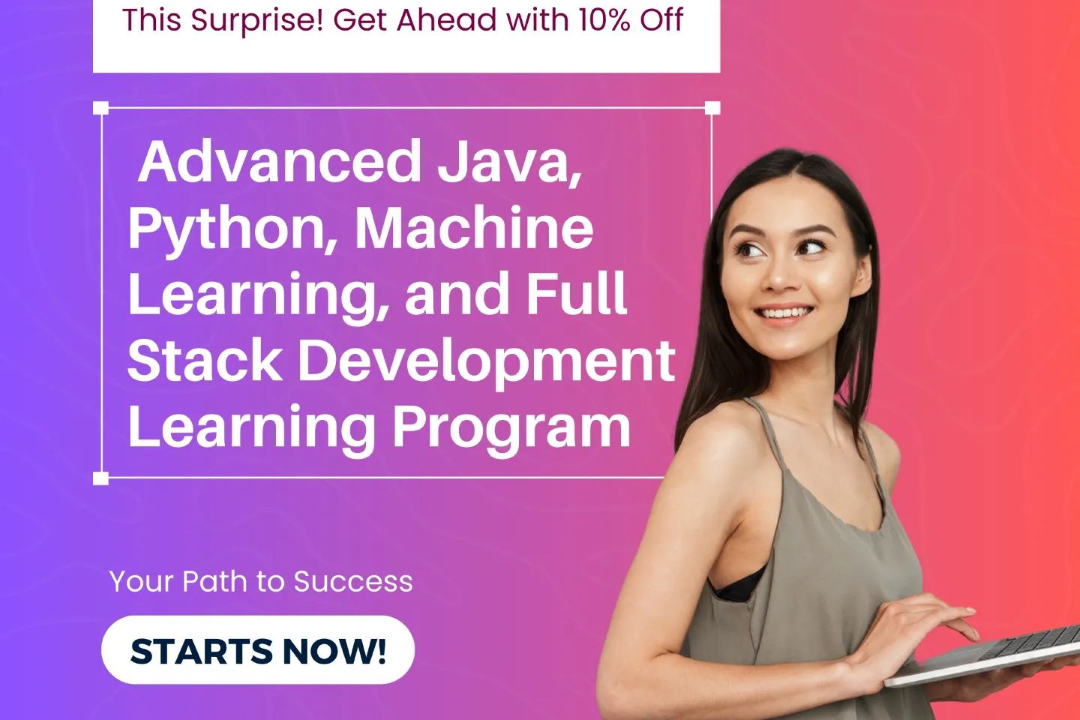Flutter For Backend Developers Interview Question
Flutter Interview Question for Backend Developers
Flutter For Backend Developers Interview Question
Flutter is a mobile app development framework that can be used by backend developers to create cross-platform apps with a single codebase. This is especially useful for backend developers who want to build mobile apps without having to learn a new programming language or framework. Flutter apps are also known for their high performance and low memory usage, which makes them ideal for building resource-intensive apps.
To Download Our Brochure: https://www.justacademy.co/download-brochure-for-free
Message us for more information: +91 9987184296
1 - Explain the architecture of a Flutter application.
A layered architecture with three main layers: UI, business logic, and data access.
2) Discuss the advantages and disadvantages of using Flutter for backend development.
Advantages: Cross platform compatibility, fast development, declarative UI.
Disadvantages: Limited server side capabilities, lack of support for certain backend technologies.
3) How does Flutter differ from other backend frameworks like Node.js and Django?
Flutter is a mobile first framework while Node.js and Django are server side frameworks. Flutter focuses on UI development, while Node.js and Django provide extensive functionality for web applications.
4) Can Flutter be used for full stack development?
Yes, with the help of plugins and third party libraries, it's possible to use Flutter for full stack development, including both frontend and backend functionality.
5) What are the challenges and limitations of using Flutter for backend development?
Server side limitations, lack of native database support, potential performance bottlenecks.
6) What are the best practices for developing Flutter backend code?
Use plugins for server interaction, implement authentication and authorization mechanisms, ensure data validation and security.
7) How does Flutter handle state management in backend applications?
It utilizes the Provider package for state management, which allows for a centralized and reactive approach to managing backend data.
8) What are the performance considerations for Flutter backend applications?
Optimize database queries, avoid unnecessary network requests, use caching techniques, and consider using a separate server for computationally intensive tasks.
9) How does Flutter integrate with third party APIs and services?
Through the use of plugins or the HTTP package, Flutter apps can easily interact with external APIs and services.
10) What are the security implications of using Flutter for backend development?
Ensure proper user authentication and authorization, implement data encryption, and protect against common web vulnerabilities.
11 - How can you monitor and debug Flutter backend applications?
Utilizing debugging tools such as the Dart Observatory, logging mechanisms, and performance profiling tools.
12) What are the best resources for learning Flutter backend development?
Official Flutter documentation, community forums, online courses, and open source projects.
13) What are the career opportunities for Flutter backend developers?
Growing demand for full stack Flutter developers, opportunities in both startups and established companies.
14) How does Flutter compare to other mobile backend frameworks like React Native and Xamarin?
Flutter offers a faster development experience, improved performance, and a more unified codebase across platforms.
15) What are the emerging trends in Flutter backend development?
Serverless computing, integration with cloud services, and advancements in AI/ML.
- Complete surveys and tasks: Many websites and apps offer rewards for completing surveys, tasks, and other activities. You can earn points that can be redeemed for cash or prizes. Examples include Swagbucks, InboxDollars, and Survey Junkie.
- Shop online through cashback websites:* When you shop online, you can earn cashback rewards by going through a cashback website first. These websites partner with retailers to offer a percentage of the purchase price back to you. Examples include Rakuten (formerly Ebates), TopCashback, and Mr. Rebates.
- Use credit cards with rewards:* Many credit cards offer rewards points for purchases, such as travel points, cash back, or gift cards. You can earn points by using your credit card for everyday purchases and redeeming them for various rewards.
- Participate in loyalty programs:* Many businesses offer loyalty programs to reward repeat customers. These programs typically track your purchases and give you points or discounts based on your spending. Examples include Starbucks Rewards, Amazon Prime, and CVS ExtraCare.
- Refer friends:* Some websites and services offer referral bonuses when you refer new customers. You can earn points or other rewards for each successful referral.
- Play games and complete offers:* Some websites and apps offer rewards for playing games, completing offers, or downloading apps. You can earn points by completing these activities and redeeming them for rewards. Examples include MyPoints, FeaturePoints, and FreeMyApps.
- Use search engines that reward you:* Some search engines, such as Bing, offer rewards for using their services. You can earn points by searching the web and redeeming them for gift cards or other rewards.
- Use social media to complete tasks:* Some websites and apps offer rewards for completing tasks on social media, such as following pages, liking posts, or sharing content. You can earn points by completing these tasks and redeeming them for rewards.
- Course Overview
- This course prepares backend developers for technical interviews in Flutter. It covers fundamental Flutter concepts, widget lifecycle, state management, networking, and testing. The course emphasizes interview techniques, mock interviews, and common interview questions, equipping developers with the tools to showcase their skills and land their dream Flutter roles.
- Course Description
- Master the interview process for backend developers seeking to transition to Flutter. This course provides comprehensive coverage of essential Flutter concepts, best practices, and interview preparation strategies. Enhance your knowledge, practice solving coding challenges, and gain insights into the latest industry trends to excel in your Flutter backend developer interviews.
- Key Features
- 1 - Comprehensive Tool Coverage: Provides hands-on training with a range of industry-standard testing tools, including Selenium, JIRA, LoadRunner, and TestRail.
- 2) Practical Exercises: Features real-world exercises and case studies to apply tools in various testing scenarios.
- 3) Interactive Learning: Includes interactive sessions with industry experts for personalized feedback and guidance.
- 4) Detailed Tutorials: Offers extensive tutorials and documentation on tool functionalities and best practices.
- 5) Advanced Techniques: Covers both fundamental and advanced techniques for using testing tools effectively.
- 6) Data Visualization: Integrates tools for visualizing test metrics and results, enhancing data interpretation and decision-making.
- 7) Tool Integration: Teaches how to integrate testing tools into the software development lifecycle for streamlined workflows.
- 8) Project-Based Learning: Focuses on project-based learning to build practical skills and create a portfolio of completed tasks.
- 9) Career Support: Provides resources and support for applying learned skills to real-world job scenarios, including resume building and interview preparation.
- 10) Up-to-Date Content: Ensures that course materials reflect the latest industry standards and tool updates.
Benefits of taking our course
Functional Tools
1 - Flutter: An open source framework for creating cross platform mobile applications using a single codebase for both iOS and Android.
2) Visual Studio Code (VS Code): A popular code editor that supports Flutter development with features like IntelliSense, autocompletion, and debugging.
3) Dart: The programming language used for Flutter development, known for its speed, safety, and readability.
4) Firebase: A cloud based platform that provides a suite of services for mobile app development, including authentication, cloud storage, and real time databases.
5) Git: A distributed version control system used to track changes to code and collaborate with others.
6) simulators: Tools that provide a simulated environment for testing and debugging Flutter applications without the need for real devices.
- Answer questions accurately and thoroughly. The more accurate and complete your answers are, the more points you will receive.
- Be the first to answer questions.* The first person to answer a question correctly will receive the most points.
- Answer questions in high demand categories.* Questions in high demand categories will earn you more points than questions in low demand categories.
- Use tags to categorize your answers.* Tags help to organize your answers and make them easier for other users to find. Using relevant tags will increase the visibility of your answers and earn you more points.
- Be active in the community.* The more active you are in the community, the more points you will earn. This includes answering questions, asking questions, commenting on answers, and voting on questions and answers.
- Earn badges and achievements.* Badges and achievements are awarded for completing certain tasks or achieving certain milestones. Earning badges and achievements will increase your reputation and earn you more points.
- Invite friends to join the site.* When you invite friends to join the site, you will earn points for each friend who signs up.
- Make a donation to the site.* Donating to the site is a great way to support the community and earn points.
Browse our course links : https://www.justacademy.co/all-courses
To Join our FREE DEMO Session:
This information is sourced from JustAcademy
Contact Info:
Roshan Chaturvedi
Message us on Whatsapp: +91 9987184296
Email id: info@justacademy.co












